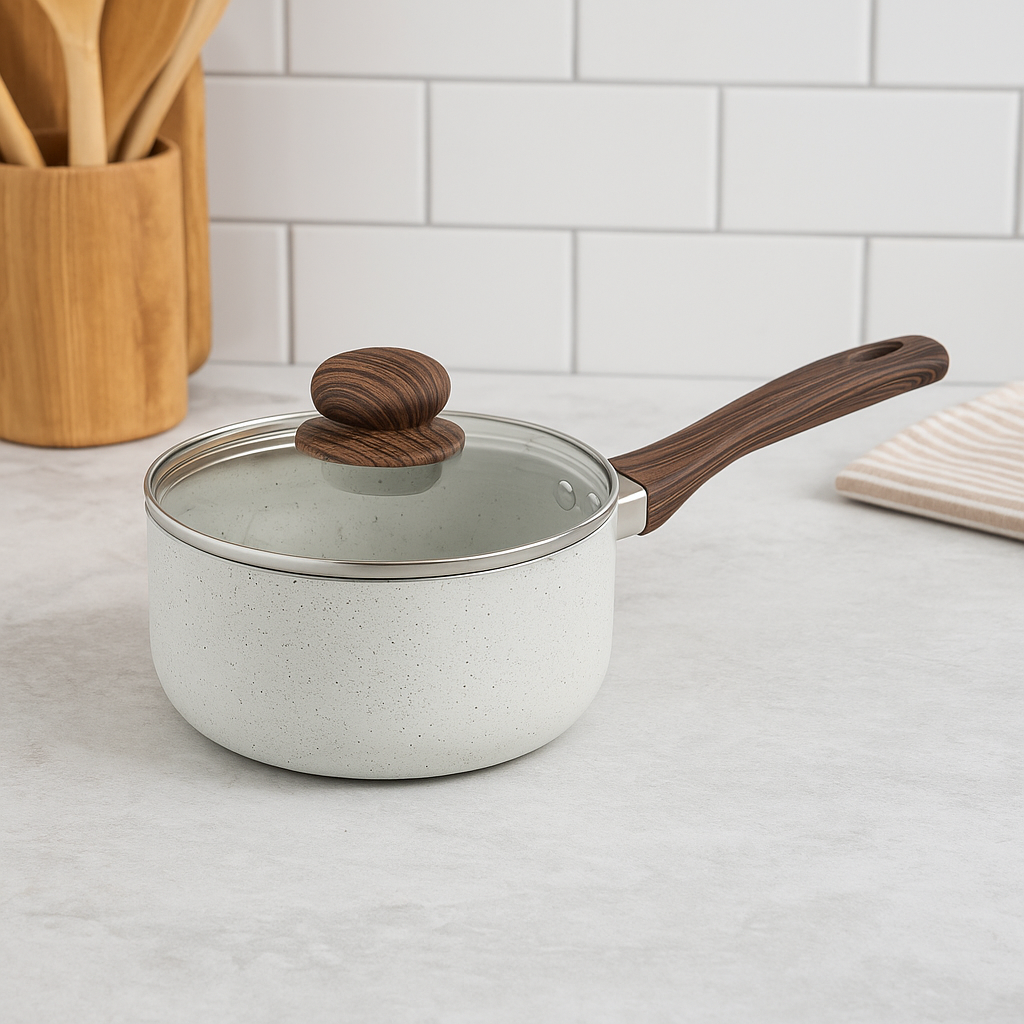Are Aluminum Saucepans Safe for Cooking Acidic Foods?
May 15, 2025
When stocking your kitchen with essential cookware, the Aluminum Saucepan often emerges as a top choice for its outstanding heat conductivity and lightweight design. However, many home cooks wonder whether these versatile pans are truly safe for preparing acidic foods like tomato sauce, citrus-based dishes, or wine reductions. The answer lies in understanding different aluminum cookware types and their interactions with food.
Traditional Aluminum Saucepan models can react with acidic ingredients, potentially causing a metallic taste and slight discoloration of both the food and pan. This occurs because the acid breaks down the aluminum's natural oxide layer, allowing tiny amounts of metal to transfer into your food. While health authorities consider these minimal amounts harmless, the flavor alteration makes many cooks reconsider using a standard Saucepan With Lid made of untreated aluminum for acidic recipes.

This is where the Anodized Aluminum Saucepan becomes a game-changer. Through an electrochemical process, anodization creates a hardened surface that's completely non-reactive. Your tomato sauce will taste exactly as it should, with no metallic undertones, when prepared in an Anodized Aluminum Saucepan. The protective layer also makes these pans more durable and scratch-resistant compared to regular aluminum versions.
For those who prefer traditional aluminum cookware, there are ways to safely use a standard Aluminum Saucepan for acidic foods. Many professional chefs recommend quickly boiling water in new pans to establish a stronger oxide layer before use. When cooking acidic dishes, avoid prolonged simmering and consider using wooden or silicone utensils to prevent scratching the surface. A high-quality Saucepan With Lid featuring a thicker aluminum base will typically react less than thinner, cheaper models.
The Anodized Aluminum Saucepan offers additional benefits beyond acid resistance. These pans heat just as evenly as traditional aluminum but are easier to clean and maintain. Their non-porous surface won't absorb flavors or odors, making them ideal for switching between different types of cuisine. Whether you're making a delicate beurre blanc or a hearty marinara, an Anodized Aluminum Saucepan performs beautifully without altering your food's taste.
When shopping for new cookware, examine the construction of any Saucepan With Lid carefully. Many premium aluminum pans now come with interior ceramic or non-stick coatings that create a protective barrier against acidic ingredients. These hybrid designs combine aluminum's outstanding heat distribution with a cooking surface that's completely food-safe. Look for a sturdy Aluminum Saucepan with a thick base and tight-fitting lid for cooking results.
For everyday cooking needs, having both types available makes sense. Keep a standard Aluminum Saucepan for boiling water, cooking grains, or preparing non-acidic vegetables. Reserve your Anodized Aluminum Saucepan for those dishes containing tomatoes, citrus, vinegar, or wine. This dual approach ensures you get aluminum's unbeatable heat responsiveness without compromising on food quality or safety.
Modern kitchen innovations have largely solved the acid-aluminum dilemma. Whether you choose a coated Saucepan With Lid, invest in anodized cookware, or use traditional aluminum with care, you can safely prepare all your favorite recipes. The key is understanding your cookware's properties and matching it to the right cooking tasks. With proper selection and use, an Aluminum Saucepan remains one of versatile and efficient pieces in any kitchen.
 English
English русский
русский Français
Français Español
Español Português
Português عربى
عربى














